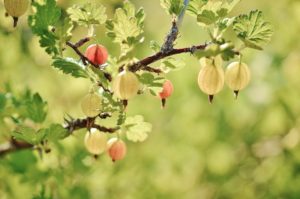
Can I Grow Gooseberries or Currants in NC?
9/16/2020 – (Reviewed 8/28/2024) The short answer is “no.” You cannot legally grow currants or gooseberries in North Carolina. …



El inglés es el idioma de control de esta página. En la medida en que haya algún conflicto entre la traducción al inglés y la traducción, el inglés prevalece.
Al hacer clic en el enlace de traducción se activa un servicio de traducción gratuito para convertir la página al español. Al igual que con cualquier traducción por Internet, la conversión no es sensible al contexto y puede que no traduzca el texto en su significado original. NC State Extension no garantiza la exactitud del texto traducido. Por favor, tenga en cuenta que algunas aplicaciones y/o servicios pueden no funcionar como se espera cuando se traducen.
Inglês é o idioma de controle desta página. Na medida que haja algum conflito entre o texto original em Inglês e a tradução, o Inglês prevalece.
Ao clicar no link de tradução, um serviço gratuito de tradução será ativado para converter a página para o Português. Como em qualquer tradução pela internet, a conversão não é sensivel ao contexto e pode não ocorrer a tradução para o significado orginal. O serviço de Extensão da Carolina do Norte (NC State Extension) não garante a exatidão do texto traduzido. Por favor, observe que algumas funções ou serviços podem não funcionar como esperado após a tradução.
English is the controlling language of this page. To the extent there is any conflict between the English text and the translation, English controls.
Clicking on the translation link activates a free translation service to convert the page to Spanish. As with any Internet translation, the conversion is not context-sensitive and may not translate the text to its original meaning. NC State Extension does not guarantee the accuracy of the translated text. Please note that some applications and/or services may not function as expected when translated.
Collapse ▲
9/16/2020 – (Reviewed 8/28/2024) The short answer is “no.” You cannot legally grow currants or gooseberries in North Carolina. …

There doesn’t appear to be any segment of our society that has been left untouched by COVID-19. Since COVID-19 …
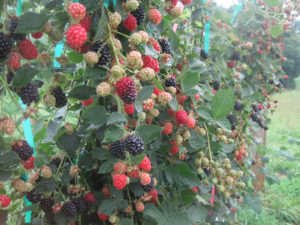
August 7, 2020 | Margaret Huffman The North American Raspberry and Blackberry Association (NARBA), in collaboration with NC State University and the University …

8/20/20 – Reviewed 8/28/2024 It has been decades in coming because finding funding to conduct research on growing truffles …
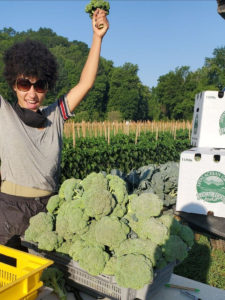
7/30/2020 – Written by Margaret Bloomquist, Research Associate Next year marks the 10th growing season of the Eastern Broccoli Project! This season we …
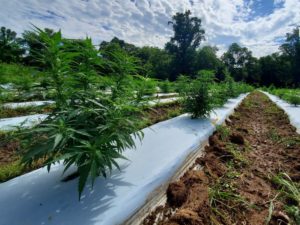
7/28/20 – Written by Margaret Bloomquist, Research Associate, and Katie Learn, Research Assistant in the North Carolina Alternative Crops …

6/30/2020 – We have been a little quiet online lately as our team is learning how to manage our …

The Environmental Protection Agency (EPA) recognized the Eastern Band of Cherokee Indians with the regional 2015 EPA Rain Catcher …
Winter pruning can seem complicated. This video will help you understand how the plant grows and why you need …

This week I have seen a couple species of lace bugs active on landscape plants. Yes, there are over …

For the past several weeks I have noticed damage to the leaves of my roses. Each year this happens and …
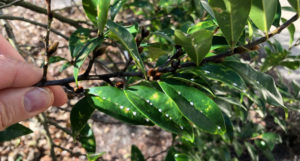
False oleander scale, Pseudaulacaspis cockerelli, is a tropical and subtropical pest originally from China. False oleander scale is common throughout …
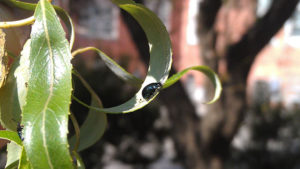
Imported willow leaf beetle (Plagiodera versicolor) are common on willows in landscapes and natural areas. Most of year adults and …

Crape myrtles are among the most commonly planted trees in the Southeast. The two main pests are crape myrtle …

As part of the Coronavirus Farm Assistance Program, the U.S. Department of Agriculture (USDA) announced that it will provide up …

Twospotted spider mites are probably the most common spider mite species to damage ornamental plants, fruits, vegetables, and others. Twospotted …
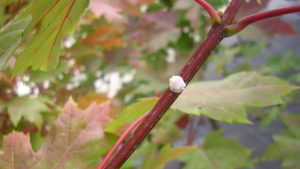
There are a couple species of wax scales (Ceroplastes spp.) in North Carolina. Common ones include Indian wax scale …

Tulip trees (Liriodendron tulipifera) have two primary pests both of which produce honeydew and both of which are actively …
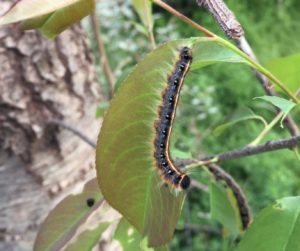
Eastern tent caterpillars are common native insects that create silk webs or ‘tents’ in the branch crotches of some …

This field guide and linked resources provide information on basic insect identification, sampling methods, monitoring, …
Vineyard establishment involves careful planning, thorough site preparation, vineyard design, planting, and trellis construction. Unlike …
Growing Chardonnay grapes, the number one vinifera variety grown in North Carolina, can be a …

Crape Myrtle Bark Scale (CMBS), Acanthococcus lagerstroemiae, is an exotic insect pest that feeds only …
New and current grape growers will find practical information on site appraisal, establishment, and operation …
Grapes grown in North Carolina are sometimes exposed to unfavorable climatic conditions and biological pests …

This factsheet discusses symptoms and control of several leaf diseases common in North Carolina blueberry …

This factsheet describes the biology of the cane lace bug or bamboo lace bug, Leptodictya …